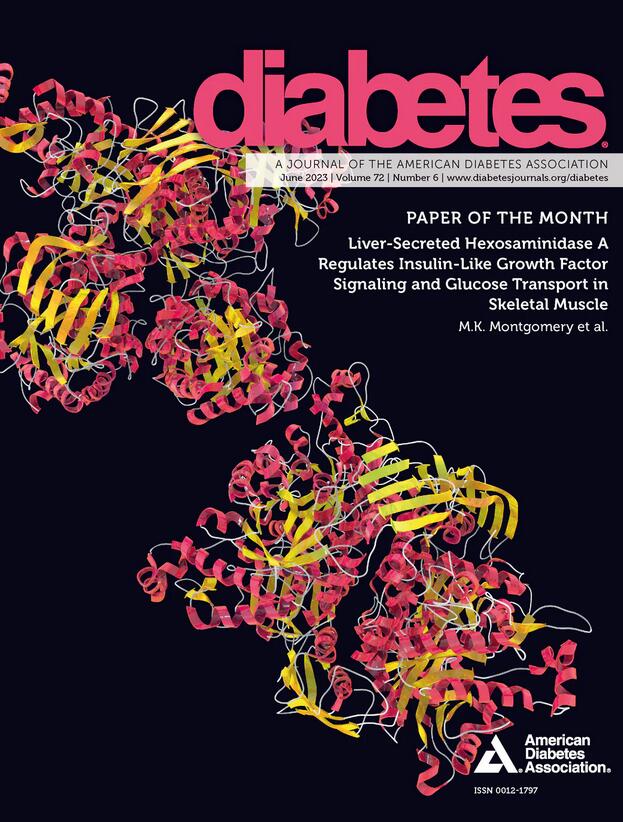Microglia Mediate Metabolic Dysfunction from Common Air Pollutants through NF-κB Signaling
IF 6.2
1区 医学
Q1 ENDOCRINOLOGY & METABOLISM
引用次数: 0
Abstract
The prevalence of Type 2 Diabetes (T2D) poses a significant health challenge yet the contribution of air pollutants to T2D epidemics remains understudied. Several studies demonstrated a correlation between exposure to volatile organic compounds (VOCs) in indoor/outdoor environments, and T2D. Here, we conducted the first meta-analysis, establishing a robust association between exposure to benzene, a prevalent airborne VOC, and insulin resistance in humans across all ages. We utilized a controlled benzene exposure system, continuous glucose monitoring (CGM) approach and indirect calorimetry in mice, to investigate the underlying mechanisms. Following exposure, disruptions in energy homeostasis, accompanied by modifications in the hypothalamic transcriptome and alterations in insulin and immune signaling, were observed exclusively in males, leading to a surge in blood glucose levels. In agreement, RNA-sequencing of microglia reveals increased expression of genes associated with immune response and NF-κB signaling. Selective ablation of IKKβ in immune cells (Cx3cr1GFPΔIKK) or exclusively in microglia (Tmem119ERΔIKK) in adult mice alleviated benzene-induced gliosis, restored energy homeostasis, hypothalamic gene expression, and protected against hyperglycemia. We conclude that the microglial NF-κB pathway plays a critical role in chemical-induced metabolic disturbances, revealing a vital pathophysiological mechanism linking exposure to airborne toxicants and the onset of metabolic diseases.小胶质细胞通过 NF-κB 信号介导常见空气污染物造成的代谢功能障碍
2 型糖尿病(T2D)的流行对健康构成了重大挑战,但空气污染物对 T2D 流行的影响仍未得到充分研究。多项研究表明,暴露于室内/室外环境中的挥发性有机化合物(VOCs)与 T2D 之间存在相关性。在此,我们首次进行了荟萃分析,确定了暴露于苯(一种普遍存在的空气中的挥发性有机化合物)与各年龄段人群的胰岛素抵抗之间的密切联系。我们利用受控苯暴露系统、连续血糖监测(CGM)方法和小鼠间接热量计来研究其潜在机制。接触苯后,能量平衡受到破坏,伴随着下丘脑转录组的改变以及胰岛素和免疫信号转导的改变,导致血糖水平飙升。与此相一致,小胶质细胞的 RNA 序列分析显示,与免疫反应和 NF-κB 信号转导相关的基因表达增加。在成年小鼠的免疫细胞(Cx3cr1GFPΔIKK)或完全在小胶质细胞(Tmem119ERΔIKK)中选择性消减 IKKβ,可减轻苯诱导的胶质细胞病变,恢复能量平衡和下丘脑基因表达,并防止高血糖。我们的结论是,小胶质细胞 NF-κB 通路在化学物质诱导的代谢紊乱中起着关键作用,揭示了暴露于空气传播的有毒物质与代谢性疾病发病之间的重要病理生理机制。
本文章由计算机程序翻译,如有差异,请以英文原文为准。
求助全文
约1分钟内获得全文
求助全文
来源期刊

Diabetes
医学-内分泌学与代谢
CiteScore
12.50
自引率
2.60%
发文量
1968
审稿时长
1 months
期刊介绍:
Diabetes is a scientific journal that publishes original research exploring the physiological and pathophysiological aspects of diabetes mellitus. We encourage submissions of manuscripts pertaining to laboratory, animal, or human research, covering a wide range of topics. Our primary focus is on investigative reports investigating various aspects such as the development and progression of diabetes, along with its associated complications. We also welcome studies delving into normal and pathological pancreatic islet function and intermediary metabolism, as well as exploring the mechanisms of drug and hormone action from a pharmacological perspective. Additionally, we encourage submissions that delve into the biochemical and molecular aspects of both normal and abnormal biological processes.
However, it is important to note that we do not publish studies relating to diabetes education or the application of accepted therapeutic and diagnostic approaches to patients with diabetes mellitus. Our aim is to provide a platform for research that contributes to advancing our understanding of the underlying mechanisms and processes of diabetes.
 求助内容:
求助内容: 应助结果提醒方式:
应助结果提醒方式:


